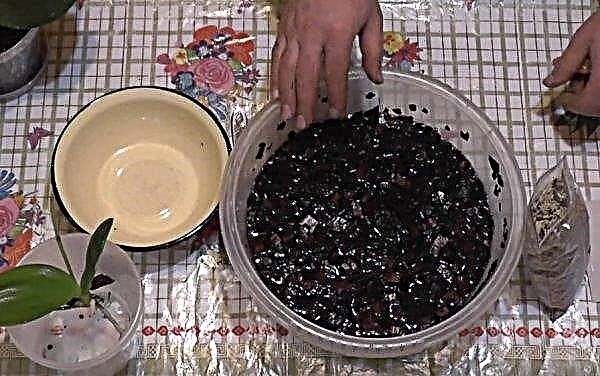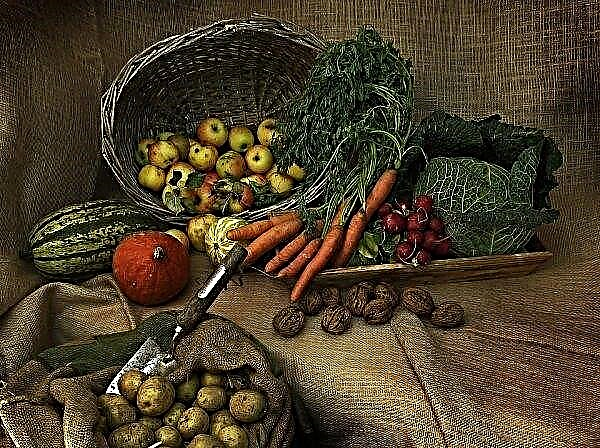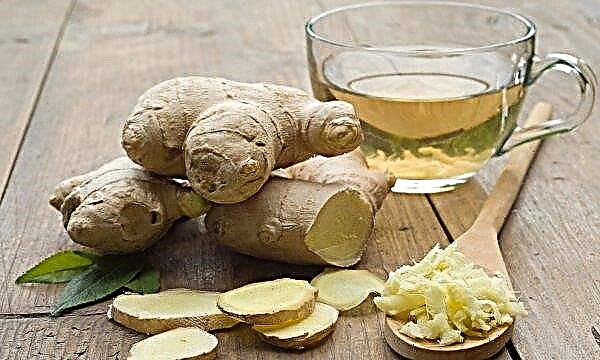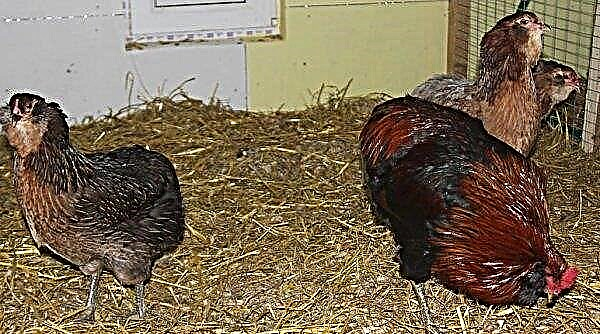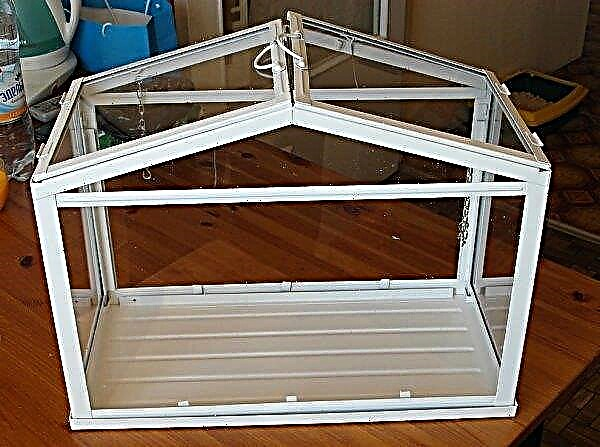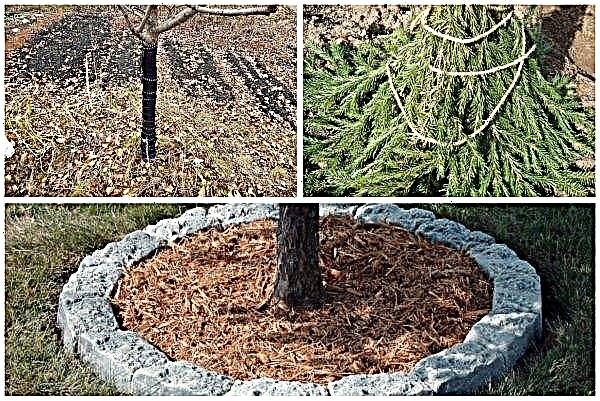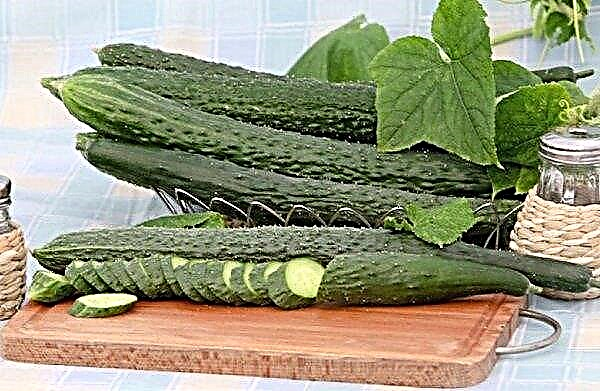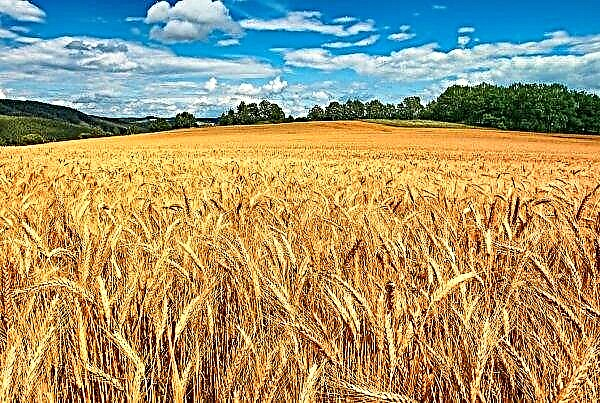The variety of cucumbers Prestige F1 was launched relatively recently, but has already managed to acquire its audience among farmers. The hybrid combines the main quality indicators of parental specimens. About the main features of the cultivation, as well as the advantages and disadvantages of the culture, read below.
Selection History and Variety Description
The variety was bred in 2007 in Russia, thanks to the work of the breeders of the agricultural company Zedek.
The authors of the variety became a team of breeders, consisting of 3 people:
- M. I. Kirillova;
- I.N.Dubinina;
- S.V.Dubinina.
Did you know? If you wipe the bathroom mirror with a piece of raw cucumber pulp before taking a shower, it will not fog up.
The main features that distinguish this hybrid from other varieties:
- the ability to maintain their size and taste even with prolonged exposure to lashes;
- the presence of a gene that suppresses the accumulation of bitterness;
- the ability to form a large number of fruits in relatively small areas (suitable for growing on a balcony), while not reducing quality.

Advantages and disadvantages
Knowing the advantages and disadvantages of the variety, you can rationally organize work on the site and significantly increase the productivity of crops.
- The main advantages of the variety:
- high taste;
- universality of use of products;
- rapid ripening of fruits, which makes it possible to sow cucumbers several times a season;
- long fruiting period;
- good adaptive ability in adverse weather conditions;
- high resistance to fungal diseases.
- Only 2 minuses:
- the inability to use seed for growing the second generation;
- the need to take preventative measures to maintain the ability of plants to resist diseases and pests.
Optimal time for landing
Prestige F1 cucumbers can be planted in seedlings or sown directly in the wells. Depending on the chosen method of landing, the timing of the procedures will differ:
- the end of March - the beginning of April - with the seedling method;
- early June - when sowing in open ground.
Did you know? Cucumber flesh can be an excellent substitute for shoe polish when you already need to go out and the cream is not at hand. In addition to its attractive sheen, the cucumber flesh creates a waterproof coating so that your feet remain dry if it rains.
Planting and technology for growing cucumbers
Growing cucumbers of this variety has its own nuances. The soil must necessarily warm up, otherwise the plants will die. This applies to both methods of cultivation. The optimum soil temperature should be + 15 ℃. In open ground, it is important to follow crop rotation rules.
Previous crops may be:
- potatoes;
- bow;
- legumes;
- cabbage;
- Bell pepper.

Seedling method
Landing at a permanent place is carried out 25-30 days after emergence, when there are 3-4 full leaves on the plant. But, landing in open ground in terms of time may differ for different regions. It is carried out only when the average daily temperature reaches + 15 ° C and there is no danger of return frosts.
The soil begins to prepare in the fall. It needs to be dug up several times with an interval of 7-10 days to a depth of 20 cm, after cultivating, cultivating the soil with copper sulfate from pests, applying manure - 10 kg per 1 m².
Did you know? The flesh of a cucumber acts like an eraser capable of erasing even ink. It is only necessary to draw times on the surface of the sheet, where a mistake is made.
Before planting, the seeds are soaked in a Zircon growth accelerator for 18 hours - 300 ml will require 2 drops of a solution. For planting, it is better to use separate peat pots. Culture is particularly affected by frequent transplants, so this capacity is the best option. In addition, during transplantation into open ground, you will not have to get the sprout from the pot once again.
The soil for planting can be done independently by mixing in equal parts:
- peat;
- sand;
- deciduous humus.
 The mixture is carefully shed with a solution of copper sulfate, a week before planting. 5 days before planting, superphosphate is added - 5 g per 5 kg of soil. One seed is planted in each glass, buried by 0.5-1 cm. The glasses are covered with a film and wait for seedlings, regularly opening the pot for 15 minutes to ventilate. With the advent of seedlings, the film is removed and watered sprouts as the soil dries to a depth of 1 cm using a spray gun.
The mixture is carefully shed with a solution of copper sulfate, a week before planting. 5 days before planting, superphosphate is added - 5 g per 5 kg of soil. One seed is planted in each glass, buried by 0.5-1 cm. The glasses are covered with a film and wait for seedlings, regularly opening the pot for 15 minutes to ventilate. With the advent of seedlings, the film is removed and watered sprouts as the soil dries to a depth of 1 cm using a spray gun.Before diving into the soil, a bed is prepared by digging the soil to a depth of 20 cm and marking places for holes. The depth and width of the hole should exceed the peat glass by 3 cm. The distance between the holes is left within 50 cm. 10 liters of water are poured into each hole, 2 days before planting. Transplanting seedlings is quite simple. It is necessary to take a pot with a sprout and place in a prepared hole, and then fill the voids with soil.
Did you know? Cucumber is one of the lowest calorie foods - only 15 kcal per 100 g. At the same time, there are no fats in its composition.
In a reckless way
The seedlingless method of planting can be used in the spring, when the risks of return frosts pass or in the middle of summer, when the seeds are re-sown. The landing site is selected in the same way as for seedlings. Site preparation begins similarly in the fall and includes the same activities. In spring, the soil is again cultivated to a depth of 20 cm. In this case, it is necessary to use the support for cucumbers, since the bushes give a decent amount of side shoots, so the holes need to be placed immediately at a distance of 20 cm from each other. The hole in this sowing is a circle of 10 cm in diameter, with the top layer of soil removed, about 5 cm. 2-3 seeds are placed in the central part of the depression and 1 cm of soil is sprinkled. An edged plastic bottle is installed on top of the seeds. With the advent of the first shoots, the shelter is removed, and after 10 days of planting, thin out, leaving 1 strong shoot.
The hole in this sowing is a circle of 10 cm in diameter, with the top layer of soil removed, about 5 cm. 2-3 seeds are placed in the central part of the depression and 1 cm of soil is sprinkled. An edged plastic bottle is installed on top of the seeds. With the advent of the first shoots, the shelter is removed, and after 10 days of planting, thin out, leaving 1 strong shoot.
Cucumber care after planting
Regardless of the selected method of sowing, further care for cucumbers of this variety will be identical. The main task is to introduce a sufficient amount of fertilizer and provide good soil moisture.
Top dressing
It is best to alternate organic fertilizers with mineral complexes. Organics are introduced by the root method, mineral complexes can be applied both under the root and by spraying on the leaf.
Important! An excess of fertilizers in the soil negatively affects the condition of plants, so do not overestimate the dosage and increase the intensity of their application. To a large number of fertilizers in the soil, the culture responds by yellowing and dropping leaves.
For the entire season of active vegetation, 4 top dressings are introduced:
- at the time of the appearance of 4 full sheets - nitrogenous fertilizers;
- at the beginning of flowering - potassium, phosphorus, calcium;
- during fruiting - potassium, phosphorus, a minimum of nitrogen;
- 2 weeks after the third - the goal is to prolong fruiting; of trace elements, plants need nitrogen, potassium, phosphorus and calcium.
Root fertilizer
For the first time, plants can be fed with a mixture of urea and superphosphate. For this, 60 g of superphosphate and 20 g of urea must be dissolved in 10 l of water. The solution is applied under the root in parallel with watering of 500 ml for each bush. Mineral fertilizers can be replaced with bird droppings. To do this, add 1 kg of litter to 15 liters of water. If cow manure is used, then 1 kg of manure is added to 8 liters of water. Ready solution is watered plants under the root of 1 liter per bush.
At the flowering stage, add to 10 l of water:
- 40 g of superphosphate;
- 30 ammonium nitrate;
- 20 g of potassium salt.
Foliar fertilizer
Foliar top dressing stimulates the absorption of nutrients from the soil by rhizome, and also helps to accelerate the processes of photosynthesis.
They are carried out according to the following scheme:
- a week before flowering or at the time of laying flower buds;
- immediately after flowering;
- during the period of active fruiting.
 For this, 100 g of sugar and 0.5 parts of boric acid are dissolved in 1 liter of boiling water. After cooling, the solution is carefully applied to the outside of the flower so as not to wash off the pollen. To prolong fruiting, you can use infusion of fresh hay: 1 kg of fresh hay is poured into 10 liters of water and left to infuse for 2 days. Such a composition not only prolongs the fruiting period, but also serves as an effective protection against powdery mildew.
For this, 100 g of sugar and 0.5 parts of boric acid are dissolved in 1 liter of boiling water. After cooling, the solution is carefully applied to the outside of the flower so as not to wash off the pollen. To prolong fruiting, you can use infusion of fresh hay: 1 kg of fresh hay is poured into 10 liters of water and left to infuse for 2 days. Such a composition not only prolongs the fruiting period, but also serves as an effective protection against powdery mildew.Important! Foliar top dressing improves the condition of the plant in just 2 hours, but can cause a sunburn, so spraying with fertilizer is carried out in the evening, and in the morning the leaves are sprayed with plain water.
Watering mode
Watering is carried out under the root using a watering can with a long nose, equipped with a spray at the end. Other irrigation methods are ineffective. Water temperature should vary between +25 ... + 28 ° С. In cool rainy weather, the roots of the plants do not absorb moisture well, which leads to its retention in the soil. On cloudy days it is better to refuse watering in general.
Watering scheme:
- before flowering and during flowering in hot weather - once a day, 0.5-1 l for each bush;
- during fruiting - once every 2-3 days, 8-12 l / 1 m²;
- during a period of reduced fruiting activity - once a week, 0.5-0.7 liters per plant.

Bush garter and shaping
Bushes of this variety of cucumbers need a garter and reliable support. This allows you to regulate growth, and also reduces the risks of the spread of pests and microbes in contact with the ground part of plants with soil. Even before planting seedlings or sowing seeds in a permanent place, a trellis is pulled along the beds. Over the entire length of the beds, piles are installed, to which the fishing line is attached at a height of 150 cm.
Important! As a twine for a garter, choose soft material that, if pulled in, will not be able to cut through plant tissue or wrap the wire in contact with the stem with cotton cloth.
When the plants reach a height of 15 cm, they tie a piece of twine on the fishing line, opposite each bush. The lower loop of the twine is fixed over 2 and 3 sheets, leaving it free with the expectation that the stem will become thicker. Shrub formation in open ground is not required. Flower buds form along the main stem. Reduce the load on the lash as the fruits ripen, removing them on time, thereby making room for new ovaries.
Soil care
After each moistening, fertilizing and rain, cucumber beds need to be loosened and weeds removed. With daily watering, loosening is carried out every 2-3 days. Mulching when growing this variety of cucumbers is advisable only when watering is started once a week. As mulch, you can use peat or compost.
Diseases and pests of the variety
Although the variety of cucumbers Prestige F1 is considered disease resistant, it can be affected by:
- downy mildew;
- white rot;
- tobacco mosaic.
Of the pests, the main enemies of this variety are:
- Whitefly - get rid of the pest with a soap solution (300 g of baby soap is added to 5 liters of water) and sticky traps. Prevention is compliance with crop rotation rules, seeding manure in the ground.

- Spider mite - when pests appear, they treat the bushes with tobacco infusion according to the instructions.

- Gourd aphids - fight insects with a solution of karbofos (add 40 g of substance to 10 l of water).

Harvesting
When the fruits reach a length of 6 cm, they need to be removed from the branches to extend fruiting. The formation of fruits takes an average of 3-5 days. During this period, it is necessary to inspect all the bushes and remove the already ripened crop. Cucumbers are cut with sharp scissors along with the stem. The variety of cucumbers Prestige F1 is attractive for its relative unpretentiousness in care and high productivity. Gherkin fruits are great for eating not only fresh, but also for winter harvesting.





